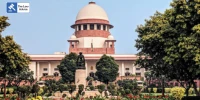
In the Delhi Ridge Tree Felling contempt proceedings, the Supreme Court on Monday observed that planting trees across multiple sites in the national capital would yield greater environmental benefits than developing a single contiguous stretch of land.
“Finding a contiguous 185-acre plot in Delhi may not be feasible or even advisable. Creating several green pockets across the city would ensure equitable green coverage. People in different localities will then have access to nearby forests and enjoy environmental benefits. In a city grappling with severe air pollution, multiple forest clusters are far more effective,” observed Justice Surya Kant.
A Bench comprising Justices Surya Kant, Ujjal Bhuyan, and Joymalya Bagchi directed authorities to provide precise location details for the 18 sites identified for afforestation by the Delhi Forest Department.
The Court noted that the petitioner’s affidavit mentioned a requirement to plant 1,67,000 trees on 185 acres of land offered by the Delhi Development Authority (DDA). However, expert reports suggested that additional land might be necessary. The Bench was informed that 18 sites measuring 168.88 acres had been earmarked, with physical possession of 17 already handed over to the Forest Department. The 18th site was reportedly caught in a dispute between the DDA and the Revenue Department.
Taking note of the submission from Senior Advocate Maninder Singh, representing DDA, that the issue had been resolved, the Court directed both departments to hand over unconditional possession of the 18th site to the Forest Department without delay.
The Bench further directed that once the plantation drive across all 18 sites is completed, the Expert Committee should submit a report detailing the number of trees planted and whether additional land is needed to meet the target of 1,67,000 trees. The Court also sought a “comprehensive scheme” ensuring the survival and long-term maintenance of the saplings, clarifying that any extra expenditure incurred would be borne by the DDA.
During the hearing, Justice Kant stressed that every portion of the allotted land should be “usable” and fertile enough to sustain native tree species. Accepting the Forest Department’s submission that the winter season was unsuitable for plantation, the Court extended the timeline for the afforestation project until March 31, 2026.
“The Forest Department, under supervision of the Expert Committee, shall begin plantation based on favorable weather conditions. The earlier deadline stands extended till 31 March 2026,” the order stated.
The Bench also raised concerns about the proposal to build boundary walls around the plantation sites. Justice Kant questioned whether barbed-wire fencing could suffice instead. Responding, Senior Advocate Maninder Singh explained that walls offer stronger protection as fencing often gets removed or damaged, and assured the Court that DDA’s Engineering Department had already commenced work on constructing boundary walls.
Before concluding, the Court remarked that plantation on 185 acres of identified land would mark the “first phase” of the greening project. The Expert Committee would later explore further steps to enhance Delhi’s overall green cover.
The contempt proceedings stem from illegal felling of trees in the Delhi Ridge area to facilitate road expansion for the CAPFIMS Paramilitary Hospital, allegedly in violation of previous Supreme Court orders. The Court had taken suo motu cognizance of the violation and initiated contempt action against DDA officials.
On May 28, the Court constituted an Expert Committee to design an afforestation plan, directing that its cost be borne entirely by the DDA. The Committee was tasked with identifying 185 acres of land for compensatory plantation.
In September, DDA informed the Court that suitable land had been identified and handed over to the Delhi Forest Department. Subsequent reports, however, indicated concerns over fencing and soil suitability, prompting the Court to call for a detailed status report.
In compliance, the Chief Secretary of the GNCTD filed an affidavit confirming that DDA would construct six-foot boundary walls where required and that both departments had appointed nodal officers to oversee implementation. The officers were instructed to file biannual compliance reports with photographic and video evidence of plantation progress.
Additionally, the District Magistrate (South) was directed to identify affluent beneficiaries of the CAPFIMS access road project and impose a one-time levy proportionate to the construction costs.
Appearance: Sr. Advs. Maninder Singh, Shyam Divan, Aditya Sondhi, and Sanjay Jain; Sr. Advs. Guru Krishna Kumar and Anitha Shenoy (Amici Curiae)
Case Title: Bindu Kapurea v. Subhasish Panda & Ors., MA 1652/2025
Website designed, developed and maintained by webexy